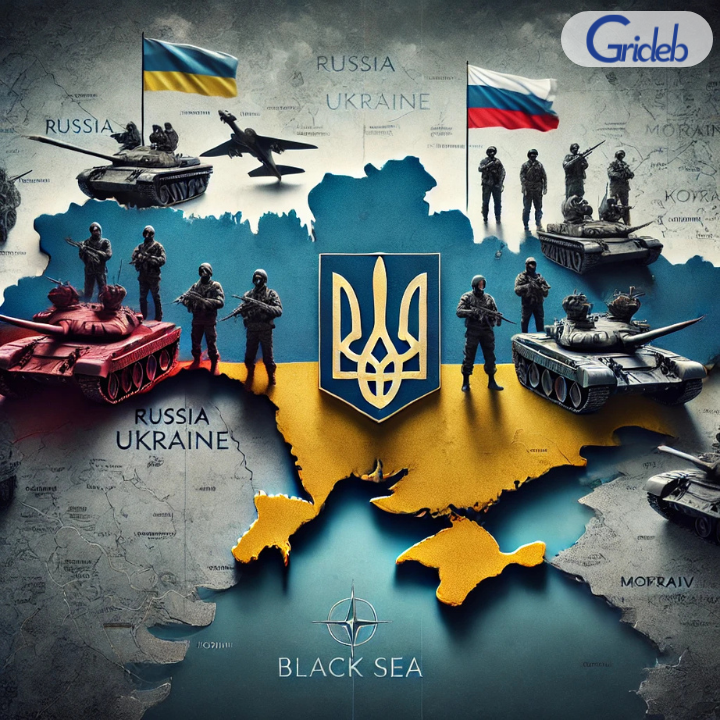Understanding the Long-Term Global Impact of the Russia-Ukraine Conflict

Understanding the Long-Term Global Impact of the Russia-Ukraine Conflict
Introduction
The Russia-Ukraine war, that has turned into a full-scale invasion on February 24, 2022, had widespread impacts on human life and world economy. More than 13 million people in Ukraine have lost their homes. Influences of the economic effects are also felt worldwide in terms of energy supplies, food security, and global stability. History has layers of political tension, ideological struggles, and strategic moves in background between Russia and Ukraine, which brings out reasons behind complex conflict.
1. Historical Ties and Geopolitical Tensions
The relation between Russia and Ukraine is almost as old as that of any other two countries - dating back a thousand years or more to common cultural, political, and economic history. When the Soviet Union collapsed in 1991, Ukraine became free, which marked the beginning of a new era of self-governance. Russia still conceives Ukraine as a country within its area of influence, and the strain continued over Ukraine's path towards Western institutions and alliances. These strains had been exacerbated by Moscow's annexation of Crimea in 2014, revealing that Russia would go to significant lengths to ensure its influence over the region. Such a common Soviet legacy and general geopolitical tension led to the broader conflict that broke out in 2022.
2. Ukraine's Shift Towards the West
Ukraine, since gaining independence, has incrementally moved toward other Western institutions, such as the European Union (EU) and NATO. This change highlighted Ukraine's search for a new identity, free from Moscow's influence, which climaxed in the 2014 Euromaidan protests, and it further altered the government of Ukraine leading to closer relations with the West, alarming Moscow. The eastward expansion of NATO is deemed by Russia to be a direct threat to security on account of proximity to Russian borders. Thus, Ukraine's push toward integration into NATO and the EU remains one of the most contentious issues between the two countries.
3. Role of NATO and Western Influence
The presence of NATO in the region has profoundly influenced Russia's perception of its role in determining security in Eastern Europe. Perhaps the obvious reason behind Moscow's actions is the perceived threat of further NATO expansion into Ukraine, which witnessed the advance of additional alliance troops to its borders. The western backing in Ukraine, largely from the United States and the European Union, has added to the fears that Russia may dread if too much Western influence can conquer the paramount power she exercises over Eastern Europe. In fact, Ukraine received substantial military and economic aid from the Western countries, and thus, continued to engage in a conflict with Moscow that threatened its geopolitical status quo.
4. Strategic Importance of Ukraine
Strategically, the geography, natural resources, and the access to the Black Sea by Ukraine have immense importance for Russia. Firstly, Ukraine is a buffer state between Moscow and NATO countries, and this inherently holds a high security value for Moscow. Secondly, the region's natural resources, including grain, natural gas, and oil, further enhance its importance. Due to its reliance on Eastern European resources, such a power shift would be an upset for the level of influence in Europe in case Ukraine does indeed fall under the influence of the West.
Military expenditure - In 2021, Russia had military expenditure that hit $66 billion; this was a testament to how much Russia was willing to invest in preserving its influence in the region, especially in terms of military and political strategies which help Russia maintain influence over Ukraine.
5. Ideological and Political Factors
There are also ideological motivations behind the Russians' actions, such as President Putin's idea of a "Greater Russia" and his will to restore Russia's world power status. Ideology closely correlates with nationalism, and the protection of "Russian-speakers" in Ukraine became a domestic narrative to legitimize the invasion. Besides, Russia's political ideology fits in well with the domestic political climate of the country. In fact, national pride and a desire to pass a historical legacy on have mobilized public opinion in support of recapturing these former Soviet republics. Third, the military spending gap is quite evident, as Ukraine's defense budget this year is worth only $5.9 billion compared with that of Russia's. Thus, tensions are clearly of a very political and ideological nature.
6. Escalating Tensions and the 2022 Invasion
Even in the run up to the invasion, Russia had marshalled troops along Ukraine's borders and had made demands about NATO presence. Added to the sorry diplomatic stalemate and inherent mutual distrust, this is a sinister portend of aggressive escalation. Even with heavy international diplomatic machinery deployed, things hastened to deteriorate and became an all-out invasion. Cities like Kyiv, Mariupol, and Kharkiv become battlegrounds since this is an attempt by Russia to make control and shape the Ukrainian political map.
Conclusion
The Russia-Ukraine conflict is based on a combination of historical, political, ideological, and strategic factors. Given the nature of this very significant geopolitical event of the modern age, it rebuilt alliances and opened peace vulnerability in sensitive geographical areas. There is, therefore, a need to trace these causes and address them to stabilize both regional and international spheres of peace. The complexity of the conflict underlines the challenges that lie ahead in finding sustainable solutions for a region marked by historical and political tensions.